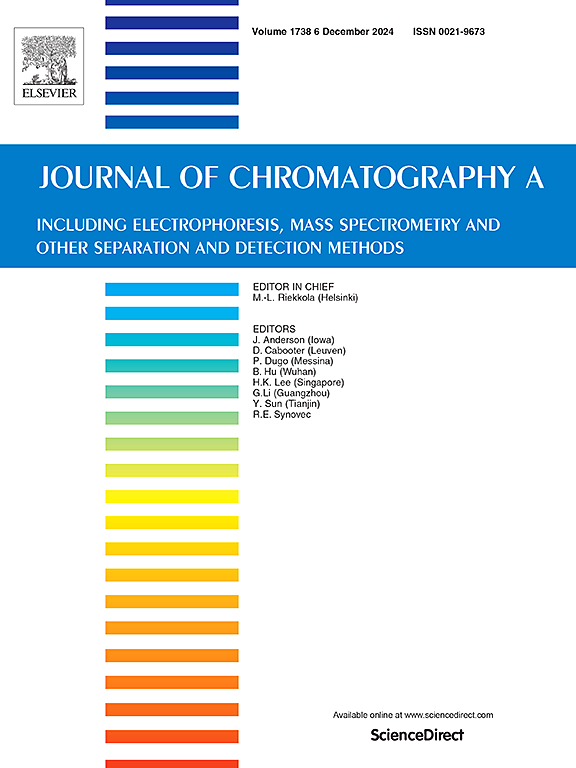Study of the aberrant retention behavior of a semi-crystalline polyamide in reversed-phase liquid chromatography
IF 3.8
2区 化学
Q1 BIOCHEMICAL RESEARCH METHODS
引用次数: 0
Abstract
The elution behavior of semi-crystalline polyamides (PAs) in reversed-phase liquid chromatography (RPLC) was examined. RPLC of the aliphatic polyamide 4,6 (PA46) yielded a single broad peak. However, the partly aromatic polyamide X (PAX) displayed a deviating elution profile, encompassing early- and late-eluting portions, which changed in relative abundance when varying injection and gradient conditions. These bands were suspected to be due to formation of amorphous and crystalline phases, respectively. RPLC fractions of the PAs were subjected to the same RPLC system and to size-exclusion chromatography. The presumed amorphous PAX portion showed two bands in RPLC, suggesting that (largely) amorphous and crystalline phases are formed upon sample injection. Differential scanning calorimetry (DSC) demonstrated that reducing the crystallinity of PAX decreased the relative abundance of the late-eluting fraction, approaching the behavior of aliphatic polyamides. X-ray diffraction and static-light-scattering analyses confirmed the semi-crystallinity of the two solid PA samples. Although both small particles and larger aggregates were observed in solution, these findings could not be correlated to the differences in elution profile of the PAs. Cloud-point measurements indicated that the solubility of both PA46 and PAX was almost independent of temperature. Strikingly, at low column temperatures (i.e. below the depressed melting point), PAX eluted as a single broad PAX peak. To conclude, the semi-crystallinity of PAX influences its RPLC-elution behavior, and by ensuring complete dissolution of the crystalline phase useful chemical information can be extracted from the obtained chromatograms.
求助全文
约1分钟内获得全文
求助全文
来源期刊

Journal of Chromatography A
化学-分析化学
CiteScore
7.90
自引率
14.60%
发文量
742
审稿时长
45 days
期刊介绍:
The Journal of Chromatography A provides a forum for the publication of original research and critical reviews on all aspects of fundamental and applied separation science. The scope of the journal includes chromatography and related techniques, electromigration techniques (e.g. electrophoresis, electrochromatography), hyphenated and other multi-dimensional techniques, sample preparation, and detection methods such as mass spectrometry. Contributions consist mainly of research papers dealing with the theory of separation methods, instrumental developments and analytical and preparative applications of general interest.
 求助内容:
求助内容: 应助结果提醒方式:
应助结果提醒方式:


